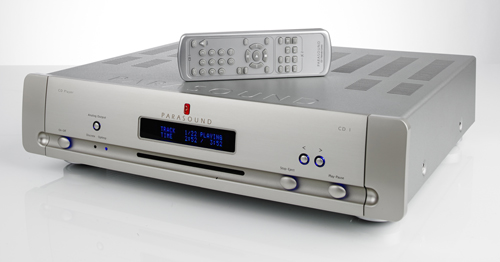What Hi-Fi? Verdict
A CD player packed with the latest technology – the Parasound Halo CD1 isn’t cheap but it is a fine CD player
Pros
- +
Impressive transparency and detail retrieval
- +
A forceful and dynamic presentation
- +
Plenty of sonic authority
- +
Refined presentation
- +
Good build
Cons
- -
Transport noisy when loading and a little abrupt in its actions
- -
Poor remote control handset
Why you can trust What Hi-Fi?
Parasound is a well-respected company, but has never made much of an impact in the UK. We’re left scratching our collective heads wondering why: judging by the quality of the Parasound Halo CD1 player we’ve been missing out.
The Halo CD1 design is a collaboration between Parasound and a Danish hi-fi company called Holm Acoustics, and is best described as disc-playing computer rather than a conventional compact disc player. Certainly, the 20-odd second wait before the player boots up on powering is very computer-like.
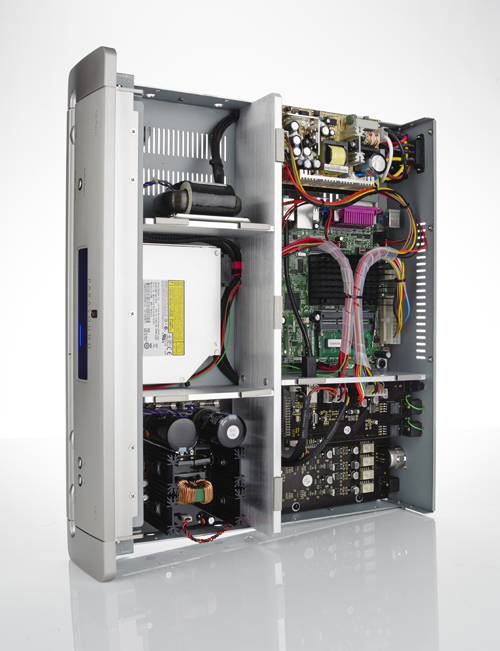
Parasound Halo CD1: Disc drive technology
The Halo CD1 player uses a slot-loading CD ROM drive to read the disc. The process is controlled by a passively cooled Intel ITX computer that runs a Linux operating system as well as Holm’s proprietary software to improve data retrieval from the disc.
The Halo disc drive runs at four times normal speed, allowing it to read sections of the disc many times to minimise reading errors. Every data sector is initially read twice; those two reads are then compared. If they match, the data is sent to a large memory buffer. If they don’t, the process is repeated until the buffer (which stores around 30 seconds of music) is about to run out. Only at that point is error correction employed – Parasound thinks error-correction software adversely affects the quality of the music stream.
The data from the memory buffer is then timed-out with a dedicated high-precision clock to minimise jitter (digital timing errors) and then sent to a single Analog Devices AD1853 digital-to-analogue converter chip working in stereo mode. The DAC chip up-samples the original 44.1kHz data eight times to 352.8kHz in a bid to minimise distortion and optimise sound quality.
Most rival players use multiple DACs, the manufacturers claiming that such a configuration results in a reduction of distortion, but Parasound wants to avoid any inter-DAC delays, and the additional circuitry required to control this effect. The proof, as ever, is in the listening.
Parasound’s engineers have taken a great deal of care with the internal power-supply arrangement, and have designed dedicated supplies for the digital and analogue sections to minimise any unwanted interactions.
Parasound Halo CD1: Design and set-up
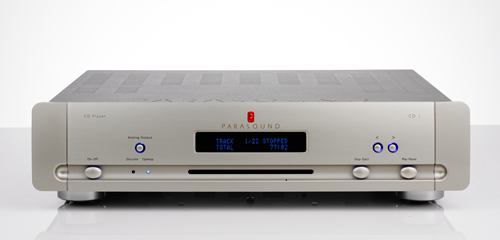
Unusually, the Halo CD1 gives the user a choice of output stages. You can listen to the sound either directly from the LME49990 op amps or via a discrete transistor output stage. The difference in performance between the two options is subtle, and the choice is likely to come down to taste and system matching as much as anything else.
With our reference Bryston BP26/4BSST2 amplifier and ATC SCM 50 speakers we had a consistent preference for the discrete option. Toggling between the options is easy – just press a button on the front panel. It’s just a shame it can’t be done from Parasound's easy-to-use but rather downmarket-feeling remote-control handset.
The CD1’s build quality is good, though not quite as luxurious as we’d expect at this price. Its casework is solid, though we’re not big fans of the plastic caps used to finish each end of the metal front panel. They’re a hangover from earlier Halo products, which were designed for rack mounting. Now it’s just a styling feature.
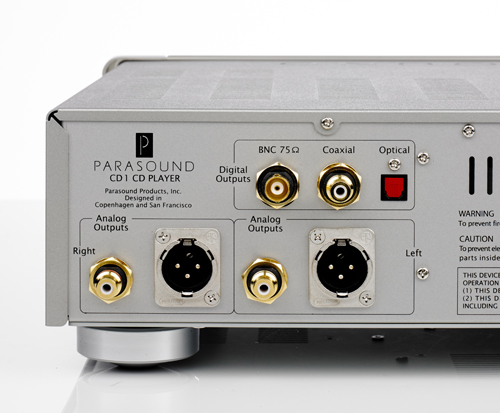
We’re not convinced by the player’s display either: it’s small and hard to read from a distance. An annoyance is that if the display is turned off, it doesn’t come on momentarily to acknowledge changes of tracks or other transport commands. The lack of indication just adds an element of doubt about what the player is doing.
While we’re complaining, that CD-ROM transport is a little abrupt in its actions and noisy while loading. Thankfully, the noise dies down to an acceptable degree once playing starts.
Parasound was determined to make this into a purist CD player so digital inputs are left out to maximise performance. But there’s the choice of balanced XLR and single-ended RCA analogue outputs plus BNC, coaxial and optical digital connections.
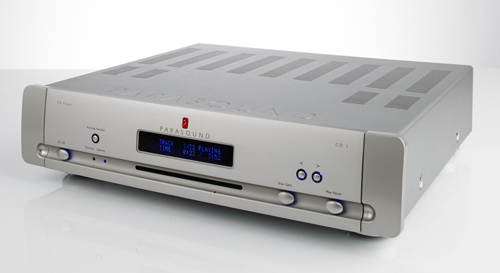
Parasound Halo CD1 review: Sound quality
We’re impressed with the CD1’s sound quality no matter which analogue output is used. It’s got a big and powerful presentation that’s packed with detail.
This crisp and clean sound works wonderfully with the likes of Bizet’s Carmen Suite No.1. With this recording, each instrumental strand is precisely drawn and pleasingly stable, even when the piece becomes busy.
The presentation is solidly planted, and intricately textured. We like the stable stereo imaging and the nicely layered sound stage. The Halo CD1’s punch is impressive, as is the way it renders subtle shifts in dynamic intensity. Importantly, that mass of information is arranged with care, with the resultant sound flowing with all the elegance and power we’d hope for.
Move onto Prince’s 3121 set and the Parasound continues to please. It’s powerful, fast and even subtle when required. We’re impressed with the attack on offer, and the general feeling of transparency.
There’s plenty of drama to the Halo CD1’s sound, then, but it doesn’t quite convey rhythms or dynamic contrasts with the determination of Naim’s CDX2 or the lightness of touch of Copland’s CDA825.
That doesn’t stop the Parasound from being an enjoyable listen though. The forceful yet refined nature of its delivery makes sure of that, as does the way it renders the nuances in Prince’s distinctive vocals.
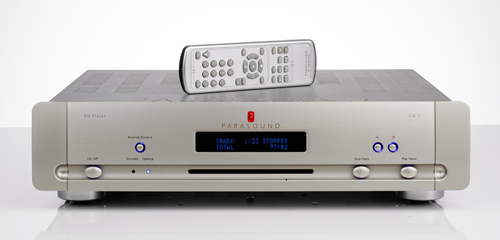
Parasound Halo CD1 review: Verdict
We’re seeing fewer and fewer CD players released in recent years, as the idea of computer audio and streaming takes a hold.
But, for those who have large CD collections, and don’t particularly want to load them all onto a hard drive, the Parasound Halo CD1 still makes a great deal of sense.
See all our CD player Best Buys
What Hi-Fi?, founded in 1976, is the world's leading independent guide to buying and owning hi-fi and home entertainment products. Our comprehensive tests help you buy the very best for your money, with our advice sections giving you step-by-step information on how to get even more from your music and movies. Everything is tested by our dedicated team of in-house reviewers in our custom-built test rooms in London, Reading and Bath. Our coveted five-star rating and Awards are recognised all over the world as the ultimate seal of approval, so you can buy with absolute confidence.
